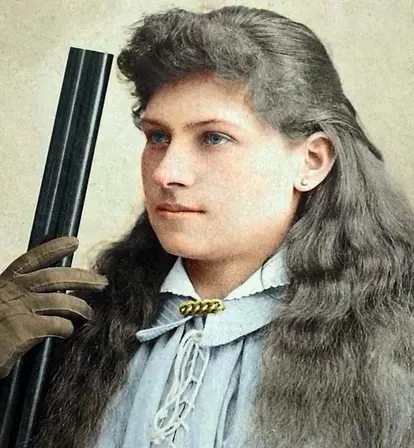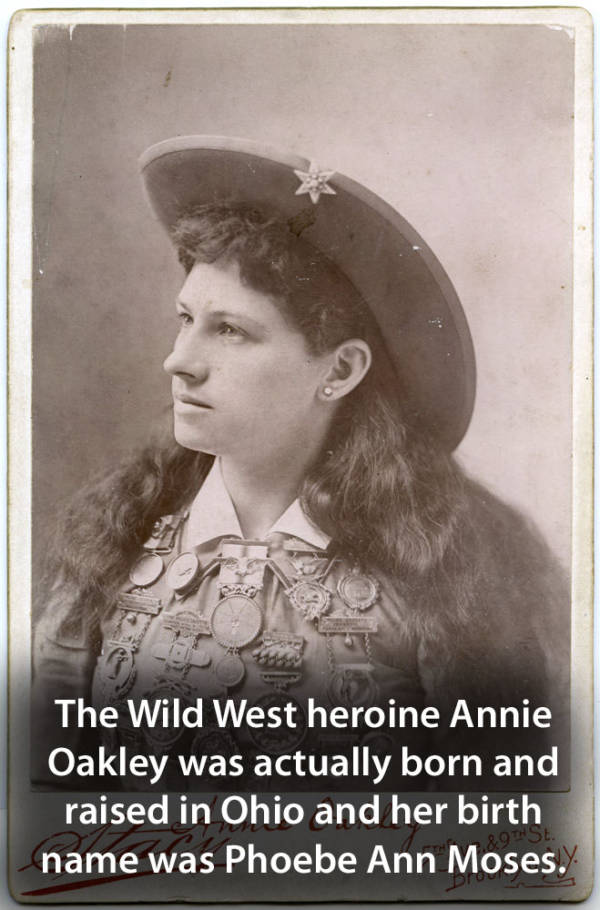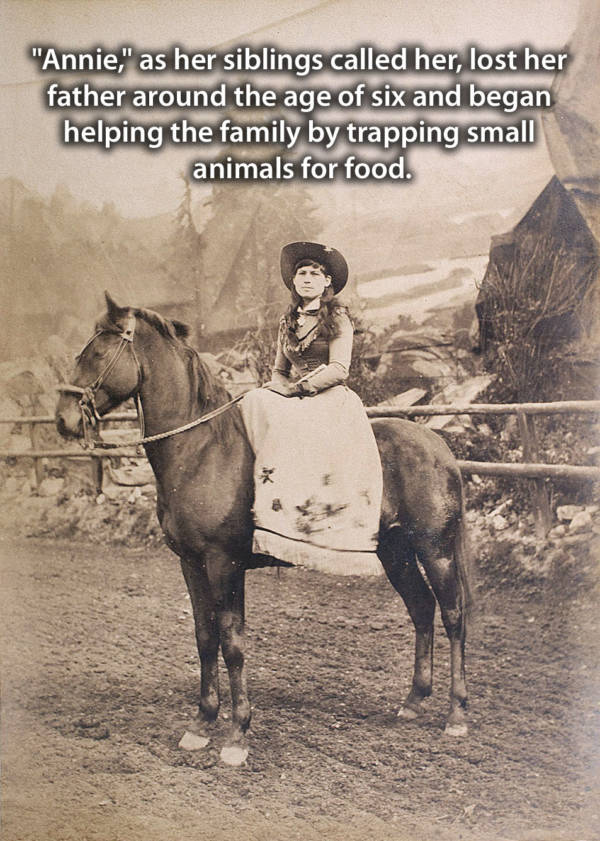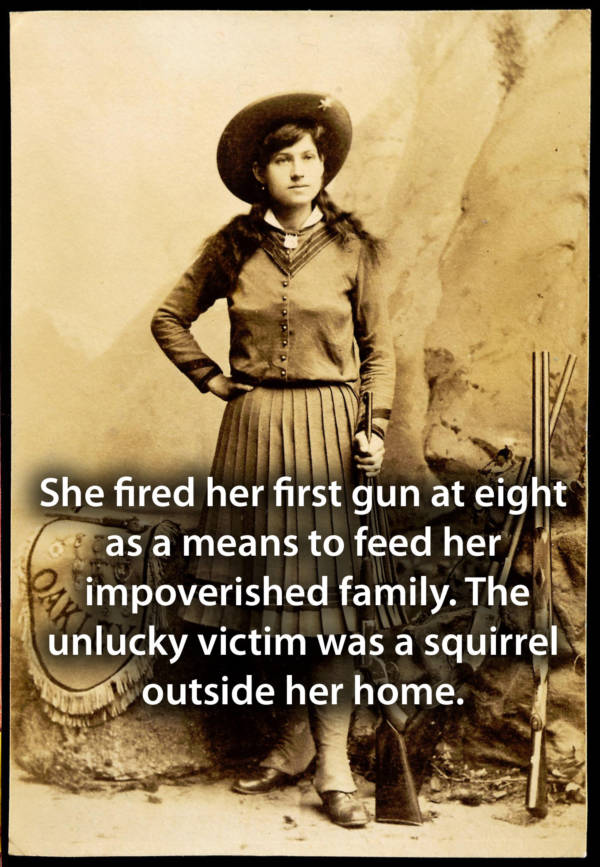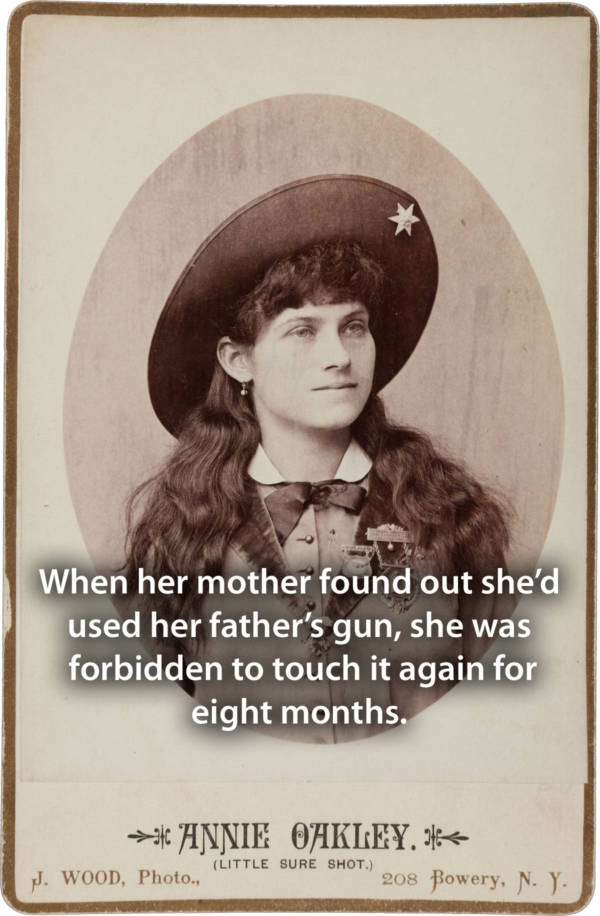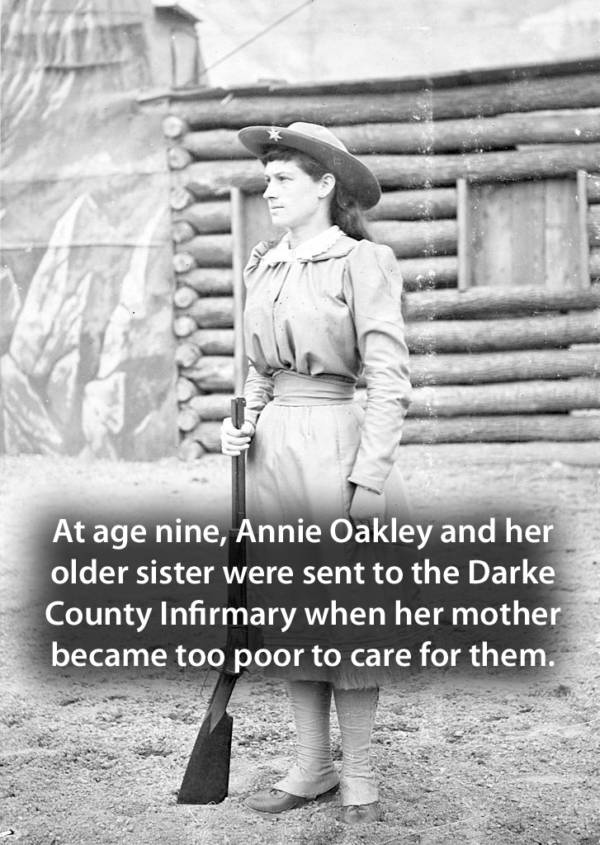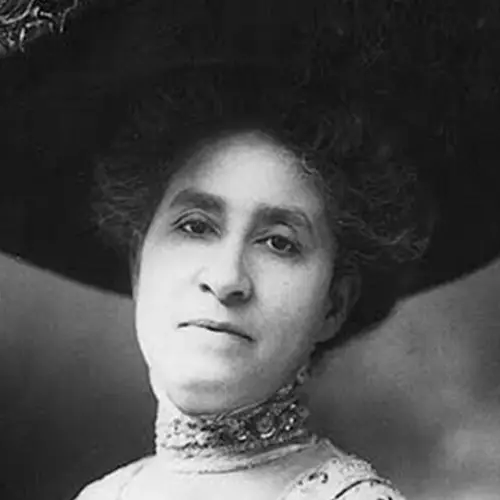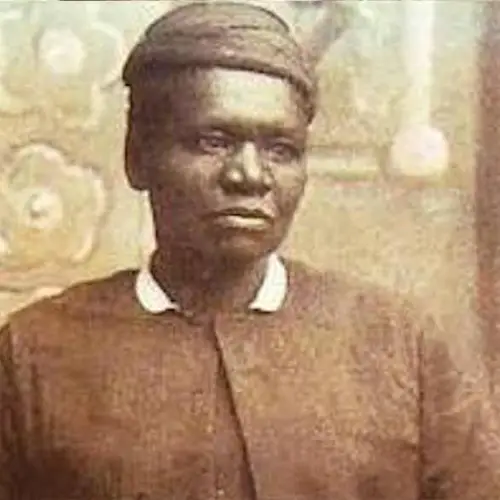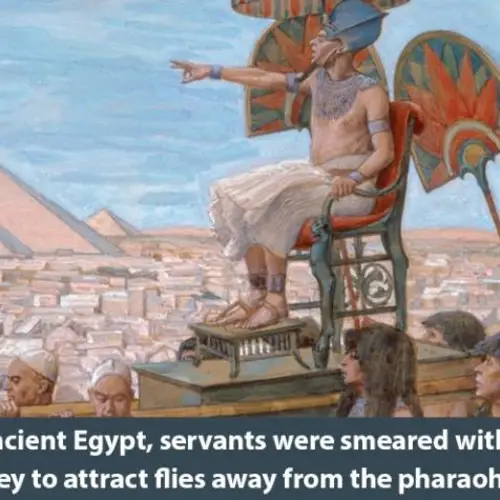Starring in Buffalo Bill's Wild West show, Annie Oakley made a name for herself as one of the first female celebrities in sharpshooting.
Throughout the tumultuous and violent history of the Wild West, few women are remembered as the stars of the show. That is, with the exception of a legendary female sharpshooter named Annie Oakley.
Presenting herself as a proper lady who happened to excel in a male-dominated profession, Annie Oakley was “America’s Sweetheart” with deadly aim. She had overcome a difficult childhood marked by poverty and abuse to become one of the most famous markswomen in history.
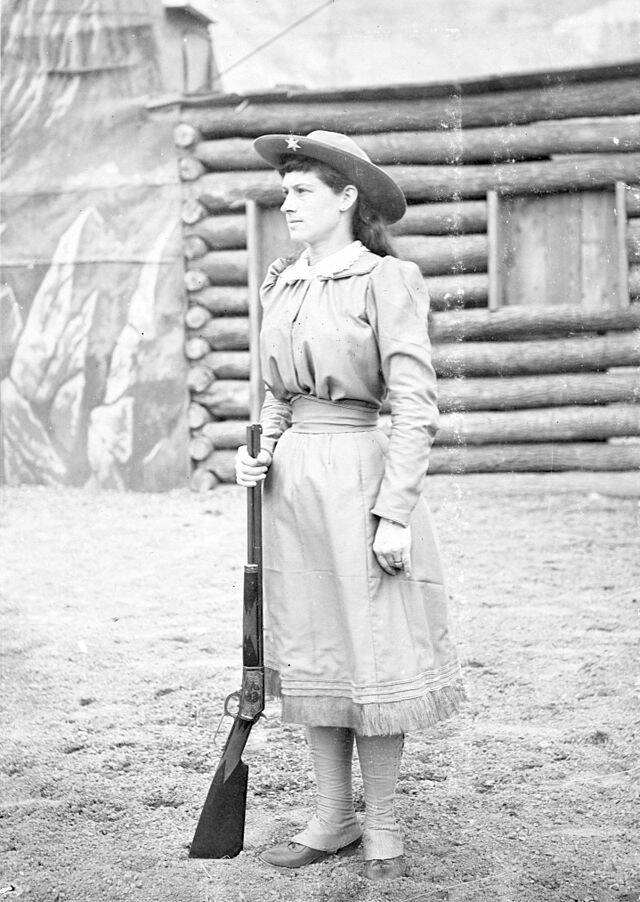
Denver Public Library/Wikimedia CommonsAnnie Oakley standing in the dirt arena for Buffalo Bill’s Wild West Show at Ambrose Park in Brooklyn, New York in 1894.
Best known for her performances in Buffalo Bill’s Wild West Show, Oakley continued shooting and setting records until shortly before her death in 1926. She advocated for women’s rights, taught thousands of women how to shoot, and even offered her skills to the U.S. military during the Spanish-American War and World War I, though her offers weren’t accepted.
Today, she has become an American legend.
The Early Life Of Annie Oakley
Born Phoebe Ann Moses (or Mosey) to Quakers in Darke County, Ohio on August 13, 1860, Annie Oakley endured a rough childhood, during which her father died of pneumonia when she was just six, leaving her mother unable to support Oakley and her five siblings. Though Oakley's mother remarried, her next husband also died, leaving her with yet another baby to take care of.
Around age nine, Oakley was sent to the Darke County Infirmary for the poor before being housed with an abusive family she referred to as "the wolves."
The family treated Oakley as if she were a slave and even reportedly locked her out of the house during a snowstorm. However, at age 12, she ran away and landed back in the infirmary before reuniting with her mother again.
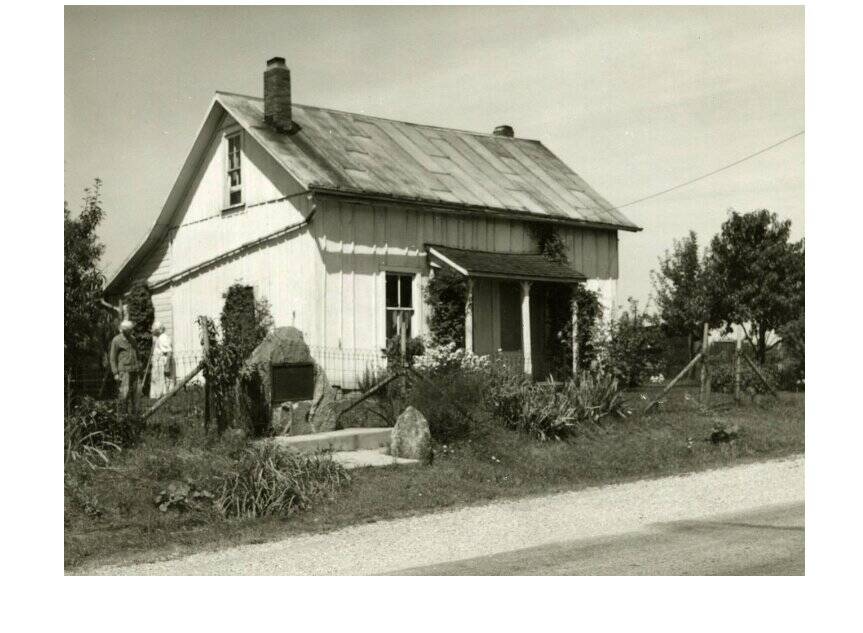
Ohio History Connection Annie Oakley's former home in Darke County, Ohio.
All the while, Annie Oakley's rough childhood had put her in a position to fend for herself and learn how to trap and, moreover, how to shoot.
Since she was eight years old, Oakley had hunted wild game, starting with her father's guns. She grew into a confident trapper and hunter, helping to support her impoverished family through her skill and effort. Oakley eventually supplied local restaurants with the animals she hunted.
Oakley's reputation for astounding feats of marksmanship soon spread throughout the region and she was able to regularly earn money shooting game. She even claimed that she was able to earn enough to pay off the mortgage on her mother's house as a young teenager.
Soon, Oakley's reputation attracted the attention of sharpshooting acts.
Annie Oakley Begins Her Fruitful Career As A Professional Sharpshooter
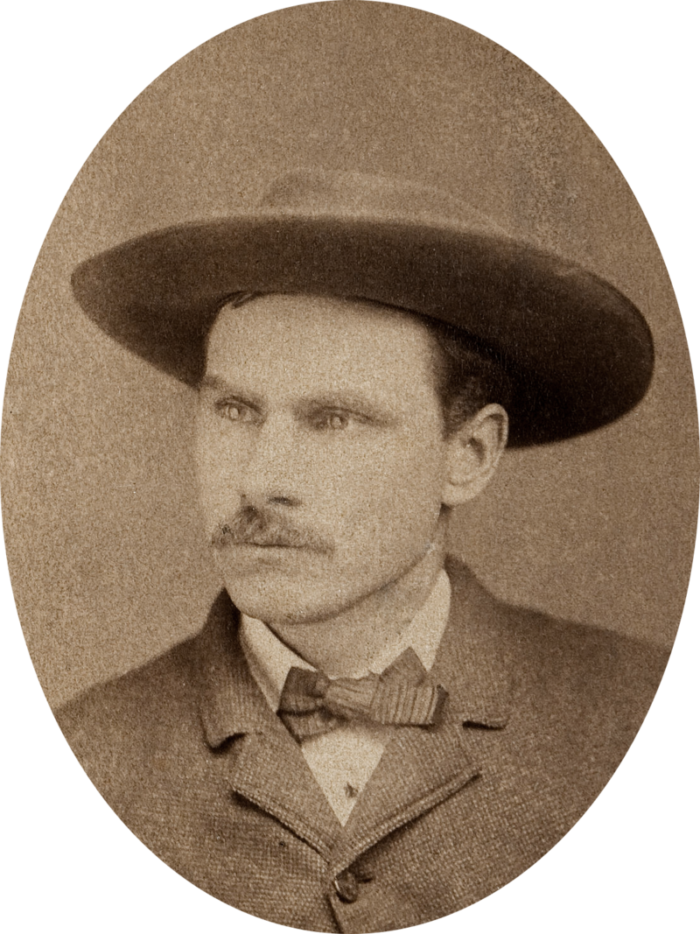
Public Domain Frank E. Butler, marksman and husband of Annie Oakley.
On Thanksgiving Day 1875, Annie Oakley bested vaudeville marksman Frank E. Butler in a shooting match, cementing her lofty status.
Instead of being angry or jealous, Butler was impressed with the then 15-year-old Oakley. Soon, the couple began courting. Though Butler was over a decade older than Oakley and had already been married, he impressed Oakley's Quaker mother because he was a teetotaler and nonsmoker.
Butler and Oakley married just a year later. They soon began touring the country together to showcase their shooting skills, and eventually joined Buffalo Bill's Wild West Show in 1885. Oakley, as she was now calling herself, then saw her shooting career grow to even greater heights.
Historians don't know for sure why she chose the last name Oakley, but some believe that it stemmed from the name of the neighborhood Oakley in Cincinnati, Ohio, or perhaps the name of a kind gentleman who paid for her train ticket that helped her escape from "the wolves."
While performing for Buffalo Bill, Oakley also earned the name "Watanya Cicilla," or "Little Sure Shot," from her fellow performer Sitting Bull.
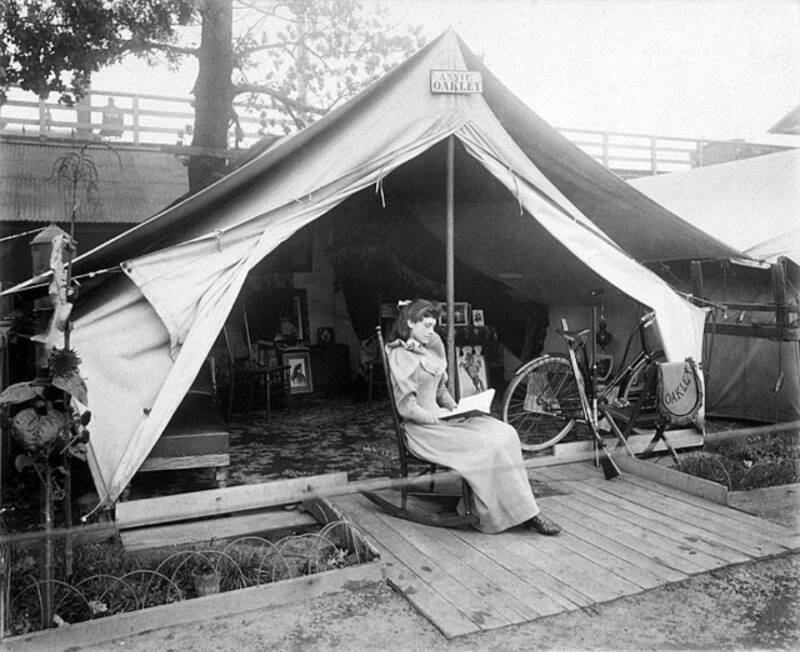
Wikimedia CommonsOakley reading at the Chicago World's Fair in 1893.
During the Paris Exposition of 1889, Annie Oakley showed off her shooting skills and gained a new level of notoriety as the Wild West's first female star — who was able to wow audiences overseas. She did have critics, especially those who believed women were not meant to be sharpshooters.
Oakley clearly saw a difference between how she and male sharpshooters were viewed by critics: "When a man hits a target, they call him a marksman. When I hit a target, they call it a trick. Never did like that much."
Still, her popularity earned her a hefty salary as one of the highest-paid Wild West performers and the ability to perform in front of the world's elites, including Queen Victoria and King Umberto I of Italy. She even reportedly shot the ashes off of German Kaiser Wilhelm II's cigarette as he smoked.
Meanwhile, Oakley also appeared in some of the earliest films. In 1894, Oakley filmed a 21-second movie in a studio owned by Thomas Edison.
Oakley's remarkable skill made her an international celebrity, but she was determined to do more than just entertain — she wanted to use her talents for a greater purpose, especially when her country went to war.
An Attempt To Enter The Spanish-American War — And A Shocking Scandal In The Newspapers
When the Spanish-American War broke out in 1898, Annie Oakley seized a possible opportunity to put her skillset to good use.
That year, she wrote President William McKinley, offering her services in the war. She also suggested creating a company of female sharpshooters to aid in battle, but her offers were declined. Oakley later wrote about her request:
"God intended women to be outside as well as men, and they do not know what they are missing when they stay cooped up in the house."
While Oakley's proposal was not accepted, Theodore Roosevelt's Rough Riders were named in honor of a show that Oakley participated in: "Buffalo Bill's Wild West and Congress of Rough Riders of the World."
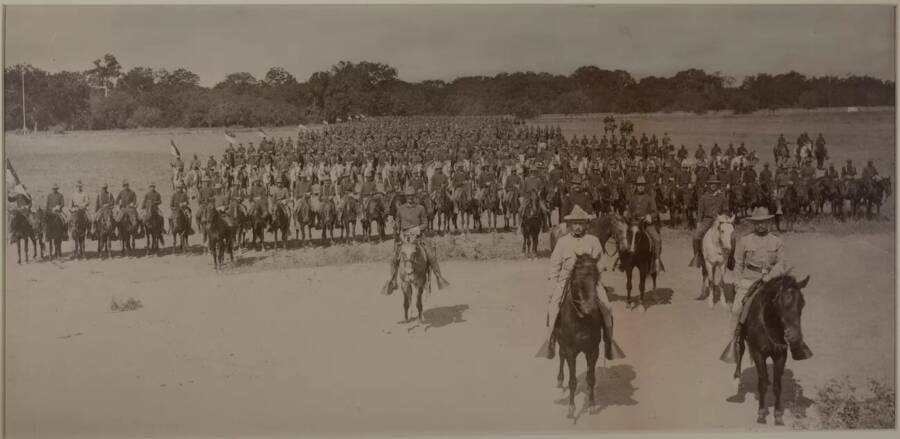
National Park Service Theodore Roosevelt's Rough Riders.
In 1901, Oakley was badly injured during a train accident and was forced to stop touring. However, she continued to shoot, and she also appeared in the play The Western Girl after she spent some time recovering.
Then, in 1903, Oakley was rocked by a major scandal after newspaper tycoon William Randolph Hearst published a false story in two of his Chicago papers that Oakley had been arrested for theft in order to pay for her cocaine habit.
The story was completely false (the woman who was arrested was actually a burlesque performer who happened to use the stage name Any Oakley), and starting in 1904, Oakley sued 55 newspapers that circulated the fake news story for libel. She won or settled 54 of her 55 libel suits, but she ultimately ended up losing money in the end due to all of her legal fees.
However, Oakley was satisfied with the end result, as she felt she had gotten her good name back, and that's what was most important to her.
The Death Of An American Legend
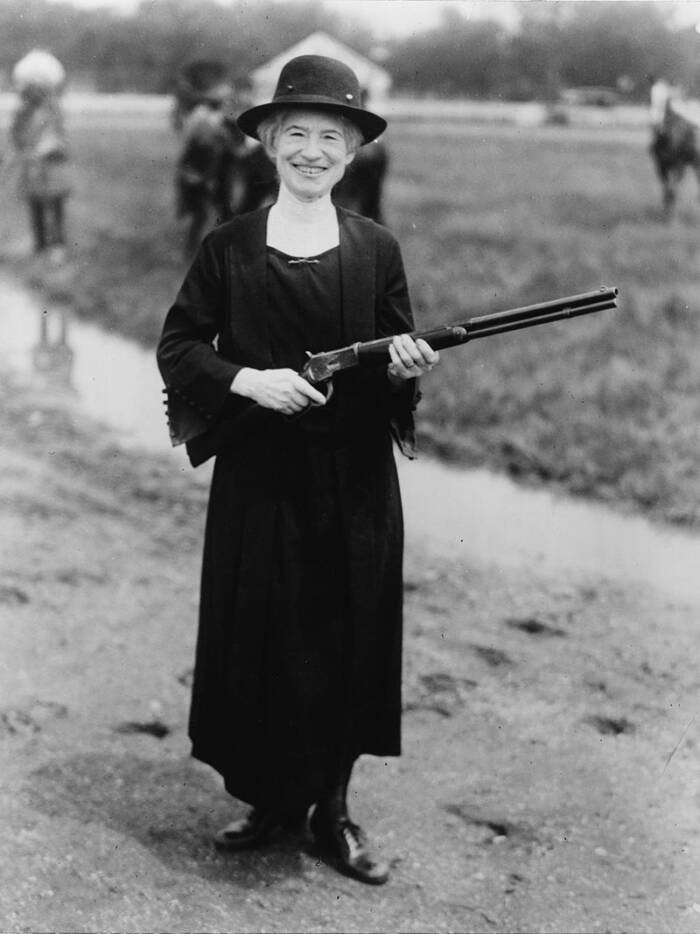
Wikimedia CommonsAnnie Oakley in 1922.
The later years of Annie Oakley's life were just as exciting as her younger days. Both she and Butler stayed in the public eye in the early 1900s.
When World War I broke out, Oakley wrote to Secretary of War Henry L. Stimson, offering to fund and raise a regiment of female volunteers to fight in battle. She also volunteered to teach marksmanship to new soldiers during the conflict, but again, neither of her offers were accepted.
Undeterred, Oakley advocated for women's rights in other creative ways. Throughout her career, Oakley taught more than 15,000 women how to use a gun. As she once put it: "I would like to see every woman know how to handle guns, as naturally as they know how to handle babies."
Oakley parlayed her gift for handling and firing guns into a career while serving as an inspiration for countless women, especially so they could learn how to defend themselves and fight back if they were ever attacked.
The fiery sharpshooter continued performing and setting records until shortly before her death on Nov. 3, 1926. She died of pernicious anemia in Greenville, Ohio at age 66. Tragically, Frank E. Butler, in his grief, reportedly refused to eat following his wife's death and died 18 days later from starvation. The couple were ultimately buried together at Brock Cemetery.
Today, Annie Oakley's legacy as a cultural icon lives on, with films, books, and even a well-known musical all dedicated to her and her place in U.S. history.
After this look at Annie Oakley, learn about the notorious frontierswoman Calamity Jane. Then, read up on the Wild West's Black cowboys.
